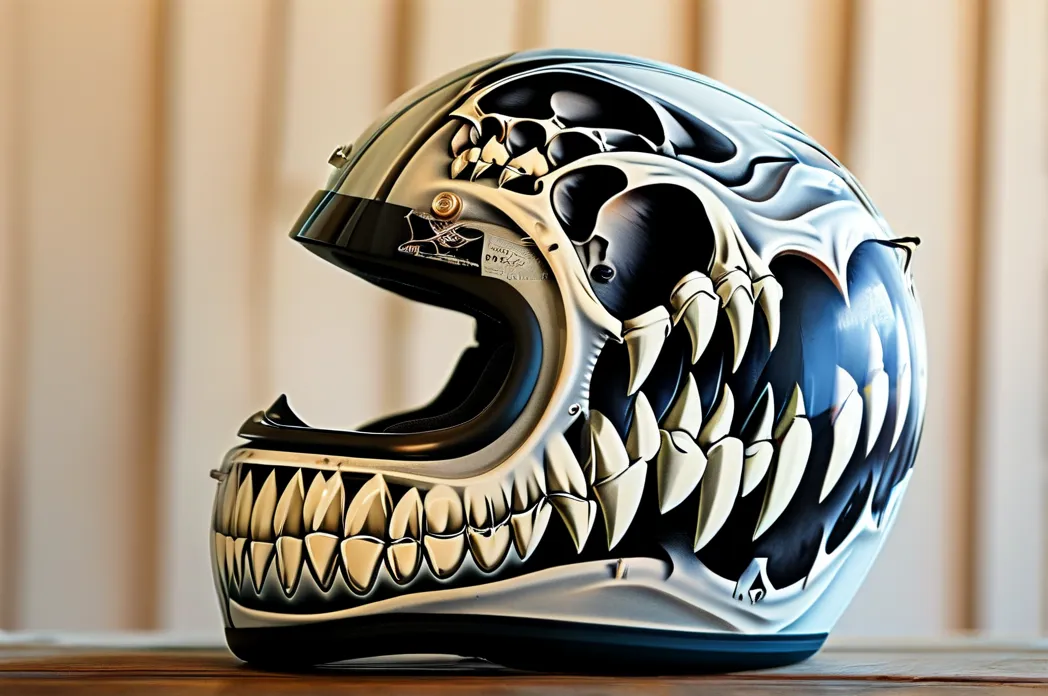Motorcycle helmets with teeth and skull designs have become a polarizing trend in riding communities. While some riders embrace these edgy aesthetics as personal expression, others dismiss them as unsafe novelty items. Let’s cut through the noise and address five persistent myths about these unconventional helmets, backed by safety data and industry insights.
Myth 1: “Skull Designs Compromise Structural Integrity”
Reality: Reputable manufacturers like Nexx and Biltwell engineer their artistic helmets to meet strict safety certifications. The decorative elements (teeth, paint, or embossed patterns) are applied externally using lightweight materials like ABS plastic or weather-resistant vinyl. Independent testing by the Department of Transportation (DOT) confirms that properly certified “skull helmets” perform identically to standard models in impact absorption tests – as long as the base shell retains its original, uncut structure.
Myth 2: “Custom Paint Jobs Void Safety Certifications”
Reality: Modifications only risk certification if they alter the helmet’s structural components. A 2023 SNELL Foundation study found that non-invasive customization – including professionally applied airbrushed art or removable decals – doesn’t affect performance. The key is avoiding:
– Drilling holes for added accessories
– Sanding down protective layers
– Using heavy materials that shift the helmet’s center of gravity
Myth 3: “Teeth/Spikes Make Helmets More Dangerous in Crashes”
Reality: Physics disproves this claim. At crash speeds exceeding 30 mph, protruding decorations typically shear off instantly upon impact. Crash reconstruction data from the Motorcycle Safety Foundation shows that removable spikes/teeth (under 2 inches) pose less laceration risk than permanent metal rivets on some “classic” helmet designs. However, riders should avoid rigid, sharp protrusions exceeding manufacturer guidelines.
Myth 4: “These Helmets Are Just for Show; No Serious Rider Uses Them”
Reality: Industry sales data tells a different story. RevZilla reports a 214% YOY increase in certified artistic helmet purchases among experienced riders (5+ years). High-profile adopters include:
– MotoGP racer Jack Miller (limited-edition skull design at 2023 Austin GP)
– ADV rider collective “The Smoking Beemers,” logging 12k miles in customized helmets
This shift reflects growing confidence in certified designs that balance safety and self-expression.
Myth 5: “They’re All Illegal Outside the U.S.”
Reality: Legality depends on certification marks, not aesthetics. A DOT/ECE-certified skull helmet is road-legal in 45 countries, including most of Europe and Australia. Jurisdictions with restrictions (notably Japan and Saudi Arabia) prohibit any non-standard helmet modifications – whether artistic spikes or GoPro mounts – making design irrelevant to compliance.
Key Takeaways for Riders:
- Certification Trumps Aesthetics: Prioritize DOT/ECE/SNELL stickers over visual appeal.
- Mod Smart: Add decorations only to removable parts like chin guards or via professional wrap services.
- Weight Matters: Ensure added elements don’t exceed 10% of the helmet’s original weight (check manufacturer specs).
Helmet engineers agree: Safe self-expression is achievable when riders choose certified bases and smart modifications. As Arai’s lead designer stated in Motorcyclist Magazine: “A well-engineered shell can wear art just as safely as it wears corporate logos.” The true risk lies not in designs, but in sacrificing proven safety standards for unchecked creativity.




Leave a Reply